USS LCS-102: A Mighty Midget
The last of the Mighty Midgets is docked near San Francisco, where a handful of dedicated Navy vets spend their days lovingly breathing life back into the heavily-armed WWII amphibious ship. These 387-ton LCS (Landing Craft Support) ships were designed to lay close-range supporting fire for landing forces on the islands of the South Pacific.
The LCS featured a flat bottom which allowed it to beach and provide cover fire for U.S. forces. Once the missions were complete the ship was able to pull itself back into open water using an on-board winch attached to a cable and anchor dropped just prior to beaching.
A couple of weeks ago, Denene and I had the pleasure of boarding the surviving LCS-102, and were treated to a tour-for-two guided by Navy vet Gordon Stutrud. In the manner that new parents proudly show off photos of their children, Stutrud led us through the floating tank that once had been home to over 70 sailors.
As we made our way into the belly of the ship, it was quite obvious that our guide was silently reliving his days at sea more 50 years ago.
As Gordon talked, explaining in detail each nook and cranny, I found myself thinking about the hardships of living aboard one of those floating powder kegs. Spaces are extremely tight. Ceilings are low. Hallways are narrow. And, well, see for yourself…
And we sometimes complain about a restless night. Imagine sleeping in close quarters like these, with 64 other people.
Then there was the challenging task of cooking for over 70 crew members. Of course, the galley was spacious and equipped with top of the line equipment.
Chefs were highly trained in the culinary arts.
On-board communication systems were the best technology that money could buy.
Voice tubes—brass pipes—ran from the engine room to the control room. When commands were given to speed up or slow down, they were shouted into the voice tube(s) and were easily heard and understood at the other end of the tube.
Sure, these things seem a bit primitive, rustic even, but nothing could compare to the “facilities.” There, it was three at a time while sea water gently flowed beneath. We heard stories of prankster shipmates setting toilet tissue on fire and sending it “adrift” in the current where it would quickly heat up the “buns” of the men seated downstream.
Still, the real purpose of the LCS was on deck—the weaponry. The crew needed a massive amount of firepower, not only to support landing parties, but to defend themselves against kamikazie pilots, and suicide swimmers and boats. Firefights were described as beyond intense and beyond any attempt at descriptions by writers and those seen in film. Yet, only six of the 130 LCS’s built were destroyed by enemy attack. The Mighty Midgets were capable of holding their own in even the worst of attacks. In fact, they were capable of reducing enemy aircraft to tiny bits of metallic confetti.
So let’s take a peek at the ship’s firepower.
First, the ammunition. The first photo shows Gordon holding the smallest of the rounds (including tracer rounds).
Next are the larger rounds. Gordon is there to show size comparison. Imagine what rounds this size could do to a target. By the way, there’s a chance that you’d find cordite in a few of these rounds. But this was basically the end of times for cordite.
Now for the big guns, the 40mm’s and more.
Close up of gun sight. You can see these in position (on either side of the gun barrels) in the preceding photo.
Gordan demonstrating the crank used to move and position the larger guns.
.50 caliber machine gun (above).
Denene with the twin 20mm guns that were often used against enemy aircraft, and for laying down cover fire for beach landings.
Below is the original flag flown on the LCS.
The experience on-board this mighty ship was beyond daunting. Listening to Gordon describe living and working on a LCS was priceless. His pride for the U.S. armed forces, especially the Navy, and for our country, is immeasurable. It would be impossible to repay our service men and women for all they’ve done for us and our country. Nothing short of impossible.
Here are a few more photos taken on the LCS.
Engines used to power the LCS.
Radio room.
Executive officer’s dining (wardroom).
Executive officer’s cabin.


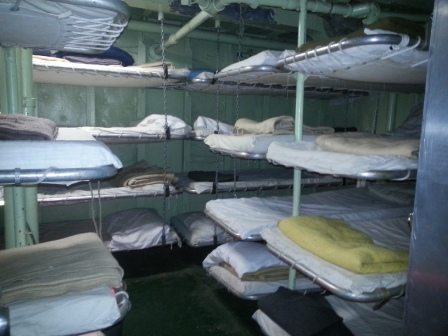
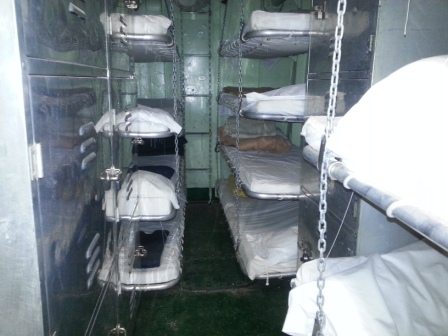
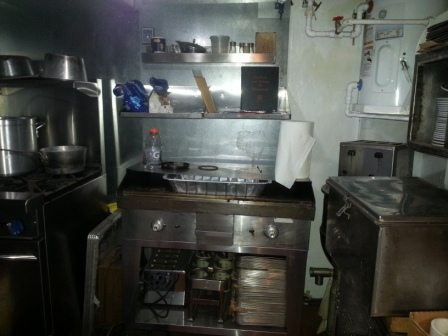

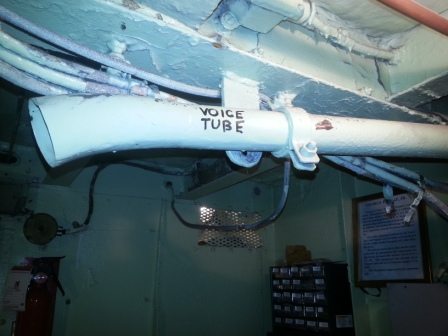
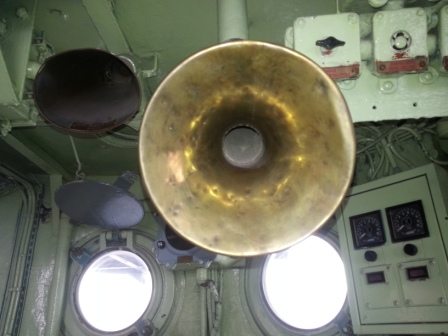


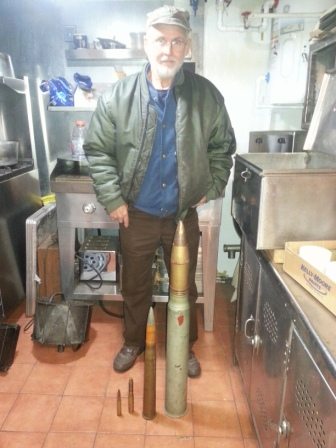
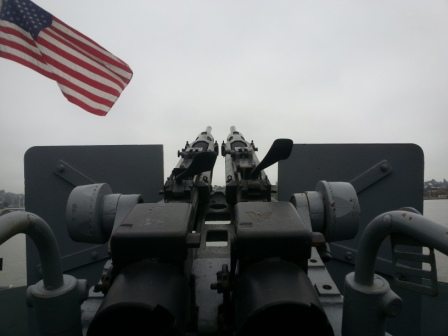
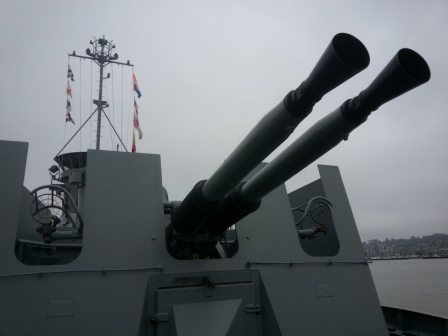
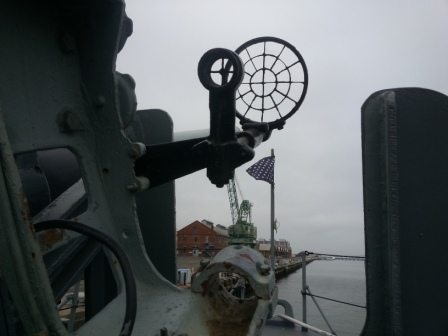
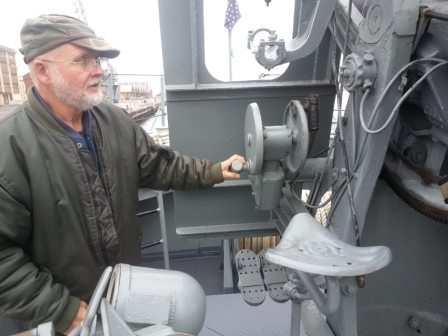
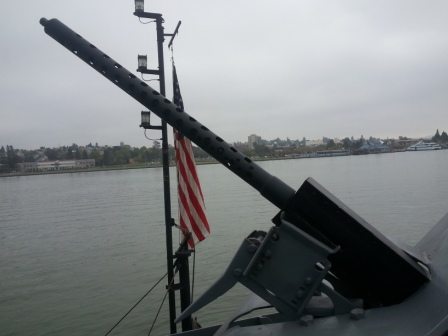
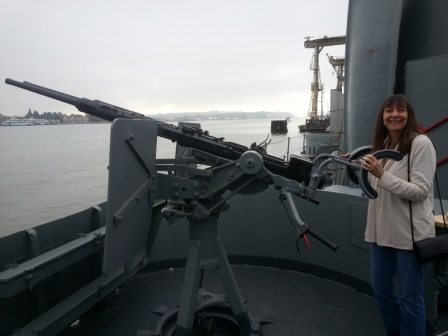
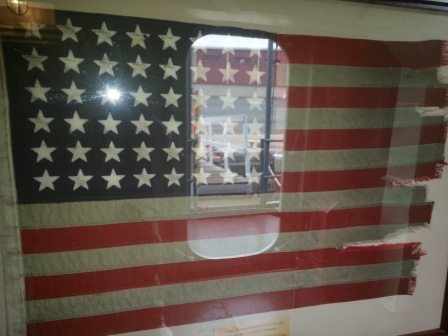

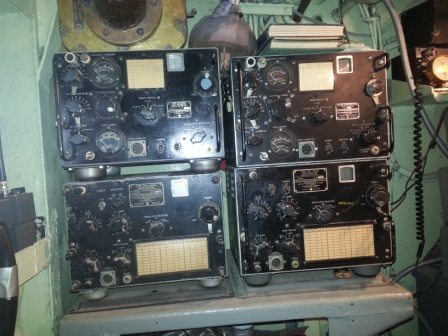



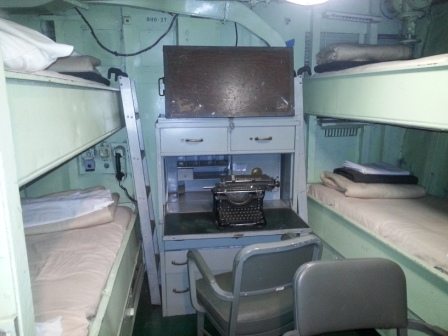
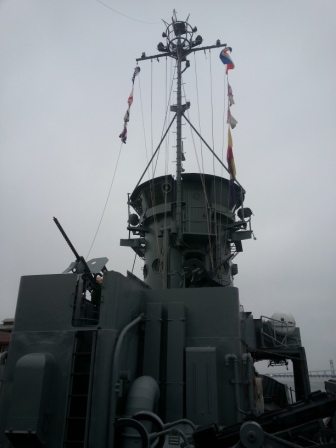



Please feel free to share, Kathy.
Lee, I hope you don’t mind I want to share your post with the RomVets. I’m sure you’ve heard of us. We’re female veterans that are writers. There are several Navy Vets on the loop and I’d like to share it with them.